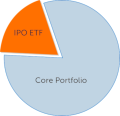We’ve updated our July blog post for quarter-end returns and new commentary.
In the third quarter, a record-breaking 83 SPACs raised $30.6 billion, the latest in a growing list of milestones for the increasingly popular IPO alternative. The space is hotter than ever, but SPAC returns post-merger continue to undermine the growing hype. If investors don’t see performance improve, this year’s record SPAC proceeds may only be matched by the record amount of money they give back in two years due to redemptions and liquidations.
Key takeaways
- 2015-2020 SPAC IPOs have underperformed post-merger
- SPAC mergers in 2019-2020 have outperformed those in 2016-2018
- SPACs with pending mergers have performed better than SPACs post-merger
- Larger SPAC mergers have outperformed smaller transactions
- Healthcare and tech-focused SPACs have outperformed; energy has underperformed
Of the 313 SPACs IPOs since the start of 2015, 93 have completed mergers and taken a company public. Of these, the common shares have delivered an average loss of -9.6% and a median return of -29.1%, compared to the average aftermarket return of 47.1% for traditional IPOs since 2015. Only 29 of the SPACS in this group (31.1%) had positive returns as of Wednesday’s close.
Buy the unit, sell the news
Hedge funds often buy SPAC units to lock in the downside protection of the redeemable share while benefiting from the potential upside of a warrant. All-weather funds gain access to a treasury-equivalent equity that meets their holdings mandate. Raising a SPAC is the easy part...
For the full article and to screen for upcoming or past SPAC IPOs, sign up for a free trial of IPO Pro.



